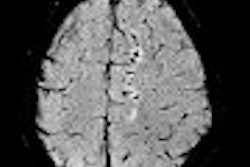The size of a small fist, the heart has been a continuing imaging challenge over the years. Several modalities compete for its attention but none have yet successfully mastered it.
This was once again reaffirmed at Imaging Update - 2004, which concluded recently at the Armed Forces Medical College (AFMC) in Pune.
"Two-dimensional echocardiography (2D echo), angiocardiography, in vivo pressure measurements using invasive catheters, radionuclide scintigraphy, and computed tomography have each contributed to our understanding of cardiac diseases and solving the clinical problems posed by them, but none of these has been adequate as a single diagnostic tool," said Lt Col C.M. Sreedhar, associate professor at AFMC, in a presentation on cardiac imaging.
In his talk on "Cardiac MRI: Applications and Advantages," Sreedhar said MRI provided the perfect platform to develop a one-stop shop to evaluate cardiac physiology and anatomy, but concluded that it would remain complementary to other modalities because of cost and access.
Echocardiography and angiography continue to be the mainstay of cardiac imaging, although recent advances have made CT more suitable for the heart and for applications such as noninvasive coronary angiography.
Putting coronary CT angiography (CTA) in perspective, Dr Anagha Joshi, associate professor at Lokmanya Tilak Municipal General Hospital (LTMGH) in Mumbai, said only one-third of all coronary angiography studies done in the U.S. included an interventional therapeutic procedure such as a stent placement. Meanwhile, two-thirds of patients undergo coronary angiography only as a diagnostic modality. "Hence the quest began to study noninvasive techniques to study the coronary artery," she said in her introduction to CTA.
Coronary CT angiography
Some important points on CTA that emerged from a practical standpoint was that saline should be loaded before the contrast in single injectors (about 80-120 cc), and collimation should be set appropriately for MDCTs (about 1-1.25 mm in a 4-slice CT, and lower in a 16-slice or higher detector-row CT), and on prospective and retrospective ECG gating.
In prospective ECG gating, images are acquired in end-diastole. In retrospective ECG gating, it is acquired both in systole and diastole, with the drawback in this case being excessive radiation.
CTA can be used to visualise the proximal segments and midsegments of all three major arteries. The distal segment of the right coronary artery is better visualised than the distal portion of the other two arteries. Arterial stenosis of 50% to 99% can also be diagnosed.
CTA can be used to exclude the presence of coronary stenosis. It is also very suitable for atherosclerotic lipid plaque visualisation and for visualisation after bypass, balloon angioplasty, and stenting.
The limitations, apart from high radiation, include impaired temporal resolution, inability to differentiate between antegrade and retrograde filling of vessels, and difficulty in imaging heavily calcified vessels, Joshi said.
Cardiac MR
Cardiac MR has certain advantages in that it can, like 2D echocardiography, evaluate cardiac morphology in terms of its natural axis in the body. But unlike echocardiography, it is not limited by the lack of an adequate viewing window, Sreedhar said.
About 80% of references for cardiac MRI are for congenital heart disease, he said, referring to his experiences. Cardiac applications for MRI are congenital heart disease, pericardial disease, myocardial perfusion, and wall motion. While both CT and MRI can be used for pericardial disease, MR is especially well-suited to measure pericardial thickness and depict wall motion.
"The ability to generate flow-related information based on direction and velocity of flowing blood using phase-contrast techniques has added another dimension to the capabilities of MRI in cardiac imaging, providing a noninvasive method for such assessment," he said.
Lt Col Naveen Aggarwal, who spoke on the cardiologist's perspective of MRI, said the future would see newer imaging protocols, intravascular contrast agents, and higher-strength magnets of about 3 tesla.
For cardiac imaging, the magnet needs to be at least 1 tesla.
By N. Shivapriya
AuntMinnieIndia.com staff writer
September 15, 2004
Copyright © 2004 AuntMinnie.com



















